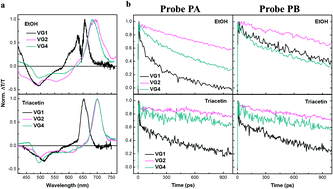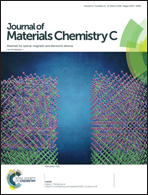Excited state photophysics of squaraine dyes for photovoltaic applications: an alternative deactivation scenario†
Abstract
Squaraine dyes (SQs) represent a versatile class of functional molecules with strong absorption and emission features, widely used as near-infrared sensitizers in organic and hybrid photovoltaic devices. In this context, the photodynamics of such molecules has been seen to influence dramatically the efficiency of the photogeneration process. The most accepted interpretation of excited state deactivation in SQs is represented by a trans–cis photoisomerization around a CC double bond of the polymethinic-like bridge, although such scenario does not explain satisfyingly the decay route of SQs dyes in conformational constrained systems or in highly viscous environments. Here we combine steady-state and time-resolved spectroscopic techniques with high level ab initio calculations to shed light into the photophysics of cis-locked indolenine-based SQs. Our results point towards alternative deactivation routes, possibly involving a dark state in molecules lacking central substitution and the rotation of the central substituent in the core-functionalized ones. This study reveals, for the first time, the possible presence of dark electronic states in SQs, a scenario that can be further investigated in molecules exhibiting higher emission yields than cis-locked indolenine-based SQs. Furthermore, these novel results can suggest a synthetic rationale to design dyes that permit quantitative and effective charge generation/diffusion and collection in photovoltaic diodes and, thus, enhance their efficiency.



 Please wait while we load your content...
Please wait while we load your content...